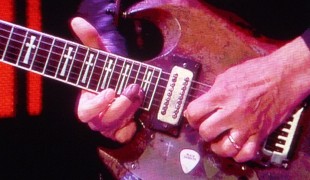- 6946
- 527
- 3
- 2
- 0
- Help Ukraine
About the solution
Sheri Denkensohn and her husband Tony Trott created "Happy on Wheels", an entrepreneurial business initiative focused on helping wheelchair users, and all individuals, to live happier lives. Sheri is the writer and speaker, while Tony serves as editor, web designer and social media guru.
Sheri, 47, of Arlington, Va., was 16 years old when her injuries in a diving accident resulted in quadriplegia. Tony, has Friedreich’s ataxia, a progressive, neurological disorder that affects his balance and muscle coordination.
Tony and Sheri met through their mutual work with the ENDependence Center of Northern Virginia, where Tony served as a peer mentor and Sheri served on the board.
In 2009, Sheri sought out Shepherd Center for surgeries on two pressure-sore wounds. Post-operative complications kept her at the hospital for six months, much of it spent in Shepherd Center’s Intensive Care Unit. “I was intubated and on a ventilator most of my time there and never thought I’d be able to go back to work. But I did! I’m thankful everyone at Shepherd knows how to be both tough and supportive.”
“We began Happy on Wheels to share our experiences in hopes that every individual will be able to apply some of them to either their own life or that of others”, Sheri explained.
Watch the video: https://www.youtube.com/watch?v=3YLghod6xuM
More info: http://happyonwheels.com/
Adapted from: http://news.shepherd.org/former-patient-creates-website-to-share-advice-...
This solution shall not include mention to the use of drugs, chemicals or biologicals (including food); invasive devices; offensive, commercial or inherently dangerous content. This solution was not medically validated. Proceed with caution! If you have any doubts, please consult with a health professional.
-
-
1226
-
0
-
92670

Disabled guitarist invents plastic and leather finger tip covers to play the guitar
-
-
-
1254
-
43
-
53289

Robohand - A 3D-printed thermoplastic mechanical hand
Grip
Studying
Limb Amputation
3d Printed
Body-Worn solutions (Clothing, accessories, shoes, sensors...)
Difficulty walking or moving
Limited range of motion
Reduced grip force (grip)
Joint deformity
Joint redness or warmth
Joint pain or swelling
Restoring mobility
Replacing lost limbs
Promoting self-management
Managing Neurological Disorders
Promoting inclusivity and social integration
Recovering from Traumatic Injuries
To improve Treatment/Therapy
Neurology
Orthopedics
Pediatrics
Vascular Surgery
United States
-
-
-
919
-
92
-
52007

Crutches with a built-in shock absorbing system
WALKING WITH A WALKING AID: Walking with a walking aid
BODY BALANCE: Maintaining body balance
Polio
Post-Polio Syndrome
Walking Aid (wheelchair/walker/crutches)
Assistive Daily Life Device (to help ADL)
Gait abnormalities (e.g., walking difficulties, unsteady gait)
Muscle cramps or spasms
Difficulty coordinating movements
Stiffness or rigidity (difficulty moving)
Paralysis of the legs and lower body
Muscle weakness
Loss of balance
Maintaining Balance and Mobility
Preventing (Vaccination, Protection, Falls, Research/Mapping)
General and Family Medicine
Neurology
Public Health
United States
-
 en
en